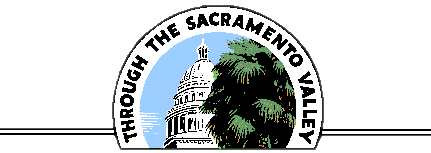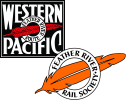SUBURBAN SERVICE
TO ELVERTA AND SWANSTON
Suburban train service on the Sacramento Northern remains one of the least explored topics of its rich history. The service was short-lived and disappeared before railfan photography became common. As a very minor chapter in the SN story, it has too frequently been overlooked by railfans and historians.
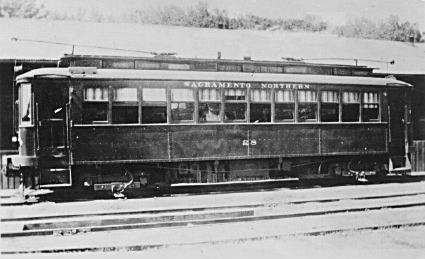
The Sacramento Northern was never a big operator of suburban trains because there was little need for this type of service during the line's passenger years. The principal population centers on the Northern Electric -- Chico, Marysville, Yuba City and Woodland--were farming towns and remained innocent of sprawl until well after the interurban era. By the time the OA&E was completed, Oakland and the other cities of the East Bay were already well-served by the Key System and the Southern Pacific's electric and steam lines. Communities beyond the Oakland Hills like Concord and Antioch remained small towns until the boom years following World War II. What might have passed for suburban service, like the Concord and Pittsburg locals, used the same heavy-weight cars as through passenger trains. Only in Sacramento were the population and outward growth large enough to justify true suburban service with dedicated light-weight cars during the Sacramento Northern's passenger years -- and then just barely.
SWANSTON BRANCH SERVICE
The first venture into suburban service began in 1914 over the Swanston Branch. This branch left the mainline at Globe and wandered through the new community of North Sacramento for a little over four miles. The track ended at Swanston, just short of the Southern Pacific mainline between Sacramento and Roseville. The Swanston Branch had once been projected to run all the way to Folsom, but Swanston was as far as the track ever went.
<
The main developer of the area was the North Sacramento Land Company. To attract the Northern Electric into building the branch, the real estate company agreed to make up any deficits from passenger fares.
For a number of years the Northern Electric and the Sacramento Northern operated as many as eight round trips to Swanston. In the early days, the route began at the 8th and J Street depot. After 1925, Swanston trains operated from the new Union Traction Terminal at 12th and H Streets. Total length of the route was about seven miles. Los Angeles-type streetcars 21 and 22, upgraded for use on the mainline, were usually assigned to this run.
Passenger service to Swanston was an early casualty of the Great Depression and automobile competition. By the early 1930s the route was down to six round trips per day. In 1933 the North Sacramento Land Company had sold most of its lots. The developer withdrew the subsidy for the trains, and passenger service was quickly abandoned. However, a number of important industries had located along this branch and it continued to see freight traffic into the 1960s.
Today Swanston again is busy with trolleys. Sacramento Regional Transit uses a portion of the old Swanston branch for its LRV line and there is even a Swanston station stop.
ELVERTA SCOOTS
The Sacramento Northern's other venture into suburban service used a portion of the Northern Electric's original mainline running north from Sacramento. As early as 1915, North Sacramento's west side and the town of Rio Linda were experiencing steady growth and there was a demand for convenient commuter service to the capitol city. This was provided by dedicated local trains using the line's regular interurban cars. In 1924 the railroad began using special suburban cars as far north as Elverta, eleven miles. The trains were known as the "Elverta Scoots".
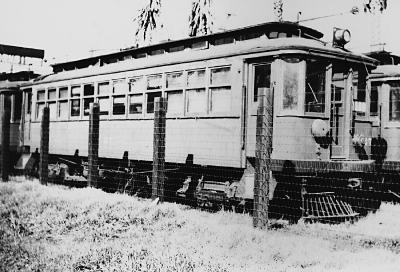
Elverta service was protected by former streetcars 21 and 25-28. The cars were completely enclosed and train doors were cut into their five-window ends. They also received headlights, air brakes, multiple-unit connections, couplers, pilots and third-rail pick-up shoes. They retained their St. Louis type-47 trucks. Car 21 ran in this configuration on the Swanston Branch as well. During peak times, Elverta Scoots could be joined into two or even three car trains.
Like the Swanston Branch, suburban service to Elverta ended in 1931, a victim of automobile competition. The cars sat idle in Sacramento for a number of years at the 17th and "D" Street yard. By 1935 the cars were all at the Mulberry Shops in Chico for dismantling. Stripped of their trucks and electrical gear, most were burned and the remaining metal parts were salvaged for scrap. Only the body of car 27 survived, sold off for use as a shed in Paradise, California. In 1999 this relic was rescued and moved to Sacramento for possible restoration.
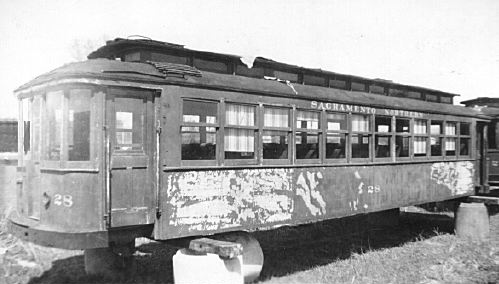
Principal references for this story are Ira Swett's SACRAMENTO NORTHERN and CARS OF SACRAMENTO NORTHERN. Full citations may be found in our bibliography section. Special thanks to Tom Irion for his help with the update of this story.
